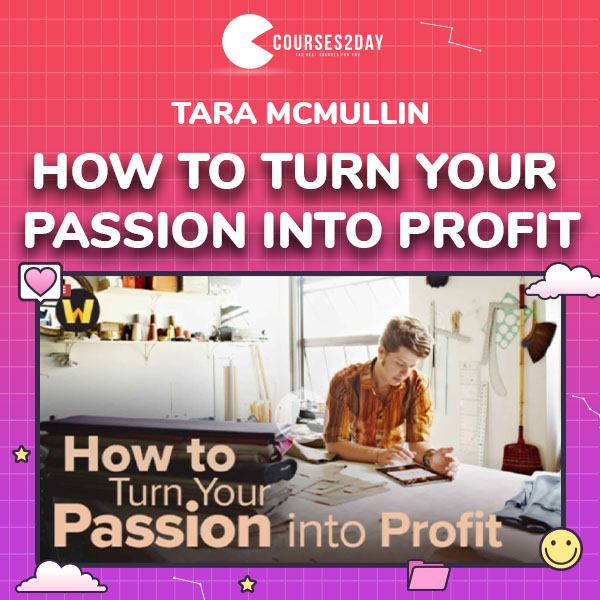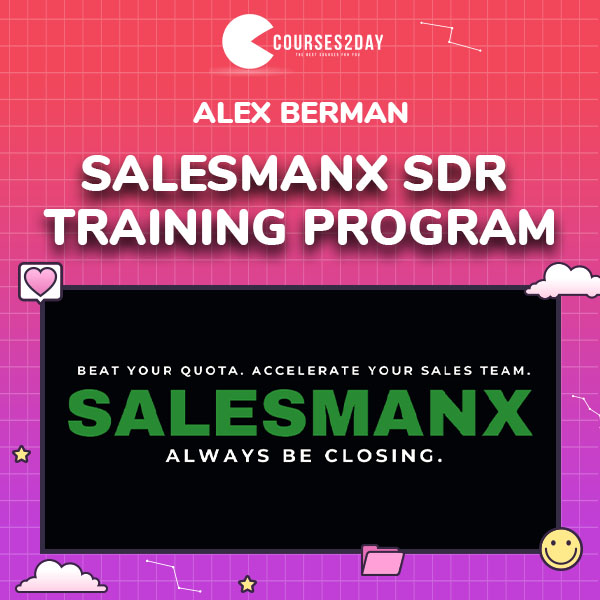How To Work Less by Rich Webster
You are referring to the course How To Work Less by Rich Webster at Courses2day.org, below is information about this course
Name of course: How To Work Less by Rich Webster
Delivery Method: Instant Download (Mega.nz, GG Drive, Box)
Contact us to purchase and check more information: [email protected]
Sale Page:https://archive.is/ZUQRg (More information)
How To Work Less by Rich Webster: A Deep Dive into Achieving More with Less Effort
In today’s fast-paced world, burnout and overwork have become all too common. Many professionals are left searching for ways to streamline their work lives without sacrificing productivity or results. How To Work Less by Rich Webster directly addresses this challenge, offering a structured path to reducing work hours while achieving better outcomes. For anyone looking to improve their work-life balance, escape the cycle of overwork, or simply optimize their productivity, How To Work Less by Rich Webster promises to deliver actionable insights and time-saving strategies. In this review, we’ll examine the course’s key components, unique benefits, and who stands to gain the most from implementing Rich Webster’s methods.
Course Overview
How To Work Less by Rich Webster is designed to help individuals and professionals focus on the highest-impact tasks while minimizing busywork and time-wasting activities. Rich Webster has crafted this course to cater to freelancers, entrepreneurs, and even employees who are struggling to juggle multiple responsibilities and are looking for ways to reduce stress, improve efficiency, and find more time for personal pursuits.
The course promises not only practical strategies for time management but also a mindset shift towards prioritizing what truly matters. Rather than merely offering generic productivity tips, How To Work Less by Rich Webster dives into actionable frameworks and psychological insights that address the root causes of overworking. Webster brings a unique perspective to the course, informed by his experiences in entrepreneurship and freelancing, which he uses to tailor his lessons to the modern work landscape.
Who is How To Work Less by Rich Webster For?
How To Work Less by Rich Webster is primarily geared towards:
- Freelancers: Those who handle multiple clients and projects, often working beyond traditional hours to keep up with demand.
- Entrepreneurs and Small Business Owners: Individuals managing all aspects of their business and looking for ways to reduce their workload without sacrificing quality.
- Professionals Experiencing Burnout: Those who find themselves working long hours with diminishing productivity, seeking effective strategies for working smarter, not harder.
- Individuals Seeking Work-Life Balance: People aiming to improve the quality of their work and life by reducing unnecessary tasks and creating more space for personal pursuits.
Whether you’re someone constantly battling a packed schedule or looking for ways to prevent burnout before it strikes, How To Work Less provides valuable insights that apply across various professions and industries.
Course Structure and Content
The How To Work Less by Rich Webster course is divided into multiple modules, each addressing a critical component of effective work reduction and time management. Rich Webster’s approach is holistic, tackling both the psychological and practical aspects of working less without compromising on results. Here’s an overview of the key modules:
- Redefining Productivity and Success: Webster begins by challenging traditional notions of productivity. He explores the concept of deep work and why focusing on meaningful tasks can result in far better outcomes than simply clocking more hours. This module is foundational, as it sets the stage for a mindset shift toward prioritizing results over time spent.
- Identifying and Eliminating Low-Impact Activities: Many of us fill our schedules with tasks that don’t drive real value. In this module, Webster teaches participants how to identify low-impact tasks and eliminate or delegate them effectively. By doing so, participants can free up more time and focus their energy on activities that yield tangible results.
- The Power of Delegation and Automation: Delegation and automation are critical to reducing workload, yet they are often underutilized. Webster discusses various strategies for outsourcing tasks, whether to virtual assistants, employees, or automated tools. He provides a step-by-step guide on how to identify tasks for delegation and choose the right tools or people to take them over.
- Setting Boundaries and Managing Client Expectations: For freelancers and business owners, managing client expectations is key to preventing overwork. Webster shares his experience in setting clear boundaries with clients, ensuring that work doesn’t bleed into personal time. This module covers strategies for negotiating deadlines, limiting scope creep, and communicating boundaries effectively.
- Building Effective Workflows and Systems: Efficient workflows are at the core of working less. In this module, Webster teaches participants how to build systems that streamline repetitive tasks and reduce time spent on routine activities. He emphasizes creating workflows that can scale with business growth and allows for more flexibility in day-to-day operations.
- Mindset Shifts for Sustainable Work Habits: Much of working less comes down to changing deeply ingrained habits and beliefs about productivity. Webster delves into psychological techniques to overcome workaholic tendencies, perfectionism, and the fear of missing out (FOMO). This module encourages a mindset that values effectiveness over constant activity.
- Time Blocking and Prioritization Techniques: The course includes time management strategies like time blocking and prioritization to help participants structure their days more effectively. Webster’s approach emphasizes focusing on high-impact tasks during peak energy periods, leading to greater productivity in less time.
- Crafting a Lifestyle That Supports Working Less: In the final module, Webster offers insights on how to build a life that naturally supports a reduced workload. This includes setting up a conducive work environment, developing hobbies and interests outside of work, and finding a support system.
Key Benefits of How To Work Less by Rich Webster
- Practical, Real-World Application: Unlike many productivity courses that focus on theory, How To Work Less by Rich Webster provides step-by-step guides, worksheets, and templates to help participants implement what they learn.
- Focus on Mindset and Habits: Webster understands that working less isn’t just about scheduling and delegating—it requires a mindset shift. This course is unique in its balanced approach to both practical tools and psychological principles, making it suitable for anyone looking to make long-term changes.
- Tailored for Freelancers and Entrepreneurs: The course content is highly relevant for self-employed individuals who manage multiple projects and clients. Webster’s insights into managing client expectations, reducing low-impact tasks, and building a flexible work structure make it particularly useful for freelancers and business owners.
- Step-by-Step Framework for Reducing Hours: The course offers a clear path toward reducing work hours without compromising quality. Webster’s framework allows participants to gradually implement changes, making it easier to adapt without overwhelming shifts in routine.
- Increased Quality of Life: By implementing Webster’s strategies, participants not only work less but often experience a better work-life balance. The course encourages personal growth outside of work, promoting a well-rounded approach to life.
Potential Drawbacks of How To Work Less by Rich Webster
- Requires Commitment to Change: Changing ingrained work habits is challenging, and this course requires a commitment to consistent implementation. For those not fully committed, the benefits may not be fully realized.
- Not Ideal for Highly Structured, Traditional Jobs: While the course is excellent for freelancers and entrepreneurs, it may be less applicable to individuals working in highly structured environments with less control over their workloads.
- Initial Time Investment: Implementing new systems and workflows may require an upfront time investment. Although this is temporary, it can be a hurdle for those with demanding schedules.
Success Stories and Testimonials
Participants of How To Work Less by Rich Webster have reported transformative changes in both their work and personal lives. Many freelancers and entrepreneurs noted a marked improvement in their ability to manage time, prioritize high-impact work, and reduce stress. Testimonials often highlight a renewed enthusiasm for work as participants find themselves with more free time to pursue personal interests and spend with loved ones.
Several participants have shared stories of significantly reduced work hours while maintaining or even increasing their income—a testament to Webster’s promise that working less does not equate to compromising success. Many have also praised the course’s practical approach, as they were able to implement strategies quickly and see measurable results within weeks.
Final Thoughts on How To Work Less by Rich Webster
How To Work Less by Rich Webster is a comprehensive guide for those looking to achieve a better work-life balance without sacrificing productivity or success. By focusing on high-impact tasks, implementing effective workflows, and setting boundaries, Webster’s course helps participants create a sustainable work model that prioritizes quality over quantity. For freelancers, entrepreneurs, and anyone seeking to escape the constant grind, this course offers a valuable and actionable approach to a more balanced, fulfilling work-life experience.
With its focus on practical applications and psychological insights, How To Work Less by Rich Webster is an excellent choice for individuals ready to take control of their schedules and improve their overall quality of life. While it may not suit those in highly controlled work environments, its relevance to freelancers, self-employed professionals, and small business owners makes it an invaluable resource for anyone looking to work smarter—not harder.














Reviews
There are no reviews yet.